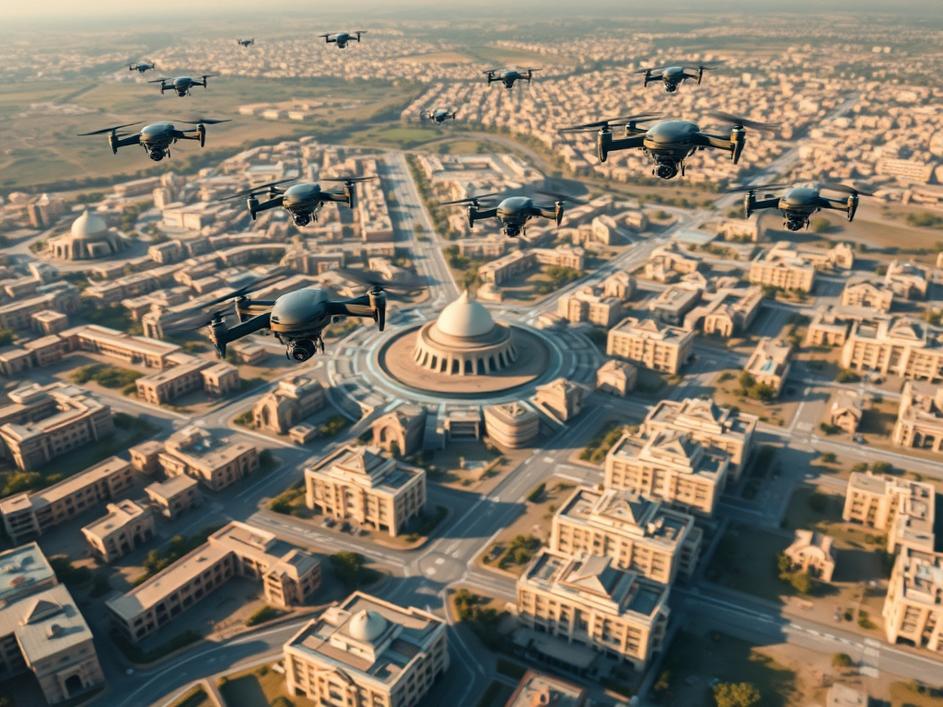


We are a digital agency helping businesses develop immersive, engaging, and user-focused web, app, and software solutions.
2310 Mira Vista Ave
Montrose, CA 91020
2500+ reviews based on client feedback

What's Included?
ToggleOur cities are always changing, growing, and adapting. Think about it: the streets you walk today might have looked very different a few decades ago, and they’ll likely change again in the future. Keeping track of all this growth, especially when it comes to property, has traditionally been a huge job. For a long time, city planners and local governments relied on old paper maps, time-consuming ground surveys, and sometimes, even guesswork. But as technology advances, so does the way we manage our urban spaces. We’re moving towards a future where our cities are not just physical places, but also digital ecosystems. This shift is clearly visible in Chandigarh, a city famous for its careful design and forward-thinking approach. They’ve recently hit a big milestone in a project called NAKSHA, which is all about creating a super precise digital map of every property using something quite amazing: drones. This isn’t just about cool tech; it’s about setting a new standard for how cities can understand themselves, plan for their future, and serve their residents better. It’s about bringing the blueprint of our urban world into the digital age, with a whole new level of detail and accuracy.
So, what exactly is NAKSHA? At its core, NAKSHA aims to build a comprehensive, digital picture of Chandigarh’s land and properties. Imagine an interactive, incredibly detailed map where every building, every plot, every boundary line is precisely drawn out and recorded digitally. This is more than just a typical map view; it’s data that can be used for official records, detailed planning, and much more. The recent significant news is that the initial, crucial phase of this project has been successfully completed. This means specialized drones have finished their work, flying over all 15 designated sectors and the five villages part of this pilot phase in Chandigarh. They’ve successfully gathered all the raw information needed to start building these advanced digital maps. This data collection is the absolute backbone of the entire project, laying the groundwork for transforming how property information is managed. It’s a huge leap forward from manual surveys and outdated records, promising a future where property ownership and city planning are backed by undeniable, precise digital evidence.
You might be picturing small, hobbyist drones, but the ones used for a project like NAKSHA are far more sophisticated. These are high-precision instruments, packed with advanced cameras, LiDAR (Light Detection and Ranging) sensors, and GPS technology. They don’t just take pictures; they collect incredibly accurate spatial data, often down to a few centimeters. The benefits of using drones for this kind of work are clear. First, speed. They can cover vast areas – entire city sectors and multiple villages – in a fraction of the time it would take human survey teams on the ground. Second, safety. Sending people into busy or hard-to-reach areas is risky; drones reduce much of that danger. Third, detail and consistency. A drone flying a programmed path ensures uniform data collection, capturing every rooftop, boundary wall, and slight elevation change without human bias or fatigue. This approach isn’t just about replacing old methods; it’s about achieving a level of detail and accuracy that was previously impossible or prohibitively expensive. The high-resolution images and data points collected ensure a digital map that is not only current but also incredibly precise, becoming a reliable single source of truth for property information.
Now, let’s consider why this project truly matters, whether you’re a resident, a business owner, or a city official. For the average person, having such clear, digital property maps can drastically simplify many aspects of life. Imagine buying a new home or settling a boundary dispute. Instead of relying on vague descriptions or old, faded documents, you’d have access to precise digital records, leaving little room for argument. This can make property transactions smoother, faster, and more secure, significantly reducing fraud or confusion. For the city administration, the benefits are even more profound. This data provides a powerful tool for urban planning, helping officials decide where to best place new infrastructure like roads, water lines, or public parks. It helps ensure fair property taxation by accurately assessing property sizes and features. It’s also invaluable for emergency services, improving their navigation and response times. Moreover, accurate digital records can foster greater transparency in governance. When property information is clear and accessible (while respecting privacy), it builds trust between citizens and their government, leading to a more efficient and accountable system. This project isn’t just about mapping; it’s about creating a foundation for smarter, fairer, and more effective city management.
With the data collection now complete, what’s next for Chandigarh’s NAKSHA project? The vast amount of raw data will be processed, analyzed, and transformed into those intelligent digital maps. This involves sophisticated software to stitch images together, identify features, and integrate them into a Geographic Information System (GIS). Once these maps are created, they will need careful verification, likely through a combination of human review and ground checks, to ensure absolute accuracy. As a pilot project, Chandigarh’s success here is a huge deal. It sets a powerful precedent, showing other cities across India and potentially the world that this high-tech approach to property mapping is not just feasible but incredibly effective. Imagine if every major city had such a dynamic, regularly updated map of its physical footprint. It would truly transform urban planning, development, and how we experience our cities. Of course, scaling such an ambitious project always brings challenges, like ensuring data security, regularly updating the maps, and making the system accessible to everyone. But the groundwork laid in Chandigarh clearly points towards a future where advanced technology helps build smarter, more transparent, and ultimately, more livable cities for everyone. This project is a testament to forward-thinking governance, truly mapping out a brighter future from above.



Leave a reply